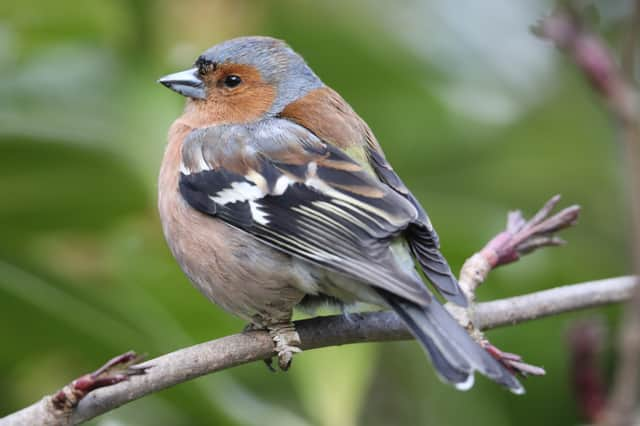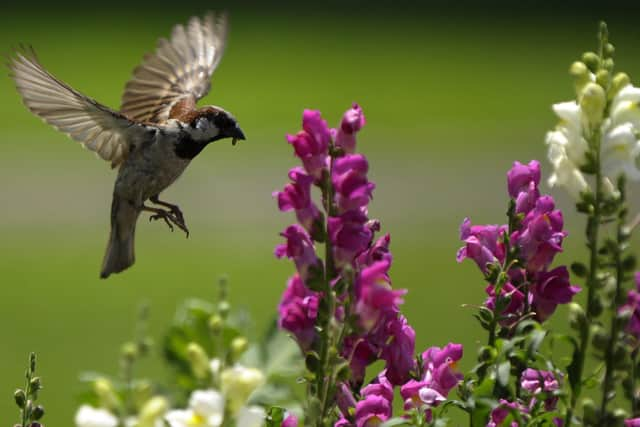Life goes on in secret world of the English garden


Even when those around them take flight or perch awhile, the transient population of Britain’s gardens and parks remains reassuringly familiar, it emerges today.
The publication by the Royal Society for the Protection of Birds of its annual “big garden birdwatch” results shows the tranquil world of the amateur twitcher to have been largely untouched either by the winter rains or the gathering storm of the world waking up to the impending health crisis.
Advertisement
Hide AdAdvertisement
Hide AdHouse sparrows, followed by starlings, chaffinches, blue tits and blackbirds, remained the species seen most often in the nation’s green spaces, according to analysis of the data collected by volunteer “citizen scientists” during the last weekend of January.


Some half a million bird watchers spent an hour observing the visitors to their garden or outdoor space as part of the initiative, revealing a picture of national life little changed since Ladybird first published its Book of British Birds nearly 70 years ago.
However, the milder temperatures meant that smaller birds such as wrens and long-tailed tits were seen in greater numbers this year. In some parts of the country, sightings of the latter variety were up by 21 per cent on the previous year, placing them among the top 10 garden visitors. Wren sightings were up by 14 per cent.
Keith Morton, a senior species policy officer at the RSPB, said: “The results of Big Garden Birdwatch are a great way of seeing how individuals counting birds in their garden can add up to some really impressive citizen science.
Advertisement
Hide AdAdvertisement
Hide Ad“You telling us you saw a long-tailed tit in your garden for the first time helps us work out how they are doing across the country.
“The huge number of people that take part in the Birdwatch helps us get a better picture of our wildlife, so thank you to everyone who joined in, we couldn’t do it without you.”
The other birds in the top 10 were goldfinches in sixth place followed by wood pigeons, robins, great tits and long tailed tits.
In a separate event, thousands of school pupils and their teachers took part in the RSPB’s Big Schools Birdwatch throughout the first half of the spring term. They recorded blackbirds at more than 80 per cent of schools, followed by starlings, with the carrion crow in third place.
Advertisement
Hide AdAdvertisement
Hide AdAnne McCall, a regional director of the RSPB, said it was “always uplifting” to see how many people got involved with the mass birdwatches.
“It shows a real connection between us and nature,” she said.
“By increasing our awareness of the wildlife in our gardens, we can appreciate it more, and learn how to take care of ourselves and the environment.
“We all benefit from having a connection with nature and whether you have a garden, balcony, or just a view of a street tree, in these unusual times it has never felt more valuable to be able to spend a bit of time noticing the wildlife you can see from your window.”
Advertisement
Hide AdAdvertisement
Hide AdThe RSPB launched its garden birdwatches in 1978, initially as an initiative with the children’s TV programme, Blue Peter.
Editor’s note: first and foremost - and rarely have I written down these words with more sincerity - I hope this finds you well.
Almost certainly you are here because you value the quality and the integrity of the journalism produced by The Yorkshire Post’s journalists - almost all of which live alongside you in Yorkshire, spending the wages they earn with Yorkshire businesses - who last year took this title to the industry watchdog’s Most Trusted Newspaper in Britain accolade.
And that is why I must make an urgent request of you: as advertising revenue declines, your support becomes evermore crucial to the maintenance of the journalistic standards expected of The Yorkshire Post. If you can, safely, please buy a paper or take up a subscription. We want to continue to make you proud of Yorkshire’s National Newspaper but we are going to need your help.
Advertisement
Hide AdAdvertisement
Hide AdPostal subscription copies can be ordered by calling 0330 4030066 or by emailing [email protected]. Vouchers, to be exchanged at retail sales outlets - our newsagents need you, too - can be subscribed to by contacting subscriptions on 0330 1235950 or by visiting www.localsubsplus.co.uk where you should select The Yorkshire Post from the list of titles available.
If you want to help right now, download our tablet app from the App / Play Stores. Every contribution you make helps to provide this county with the best regional journalism in the country.
Sincerely. Thank you.
James Mitchinson, Editor